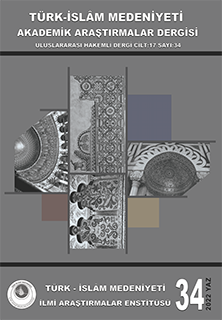The Ones outside the Neighbourhood in the Ottoman Empire: Bachelors’ Room and Bachelors
Keywords:
Bachelor, İstanbul, neighborhood, Ottoman StateAbstract
In Turkish dictionary, the word single has not been only defined as the
unmarried person. Along with this definition, it was defined as the person living
alone apart from his/her family; even he/she is married. Moreover, person
working in farm business, plowman, servant, maid, hired wrangler and finally;unemployed, vagrant terms were added to these two definitions. In fact, all those
definitions mention how the term single is defined in society rather than its
definition, and the viewpoint of society to singles. Thus, singles also include
people who are not embraced by neighborhoods - the smallest unit of urban
structure of the Ottomans -, thus the ones excluded from the society. Singles,
who were excluded from the neighborhood, could only find a place for
themselves among marginal groups of the society. Singles who were somewhat
comfortable when they found a bail but still considered as the ones who may
commit a crime or criminal minds, therefore reflected as troublemakers for the
documents. In this study, I am going to discuss the place and the lives of people
using and living in the place, the viewpoint of society to such places, how
humans and places were integrated with each other, and the effects of such
integrating point of view on the people who even necessarily had to choose a
place as their living space. In addition, I will try to analyze in this report how the
people who had to choose such rooms by their social status and income were
perceived as one of the marginal groups of society, and how they are affected by
this perception. Thus, I intend to make contribution to understand a section of
the society. For that, I am going to use the Ottoman archive documents and
sources of that era.
Downloads
Published
How to Cite
Issue
Section
License
Copyright (c) 2015 TÜRK-İSLAM MEDENİYETİ AKADEMİK ARAŞTIRMALAR DERGİSİ

This work is licensed under a Creative Commons Attribution-NonCommercial 4.0 International License.







